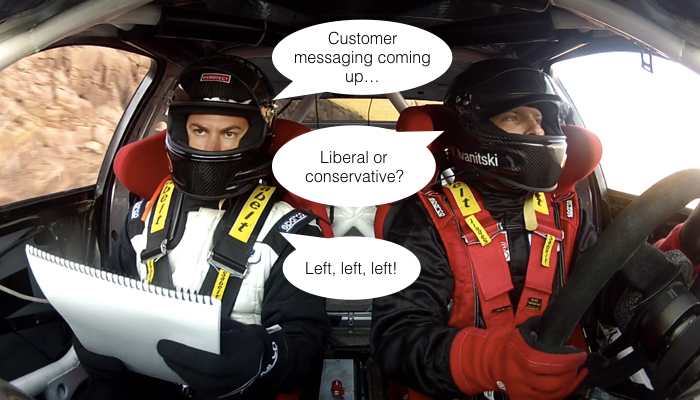Here’s the simplest and soundest way to bang heads effectively.
For the past few months we have been writing about the perils of the Big Reveal and more effective ways to include clients in the creative process. Many of you, dear readers, have asked for help doing just that. So we thought we would share our favorite collaboration method: Edward DeBono’s Six Thinking Hats.
Six Thinking Hats, One Straightforward Goal
What: The Greeks taught us to debate issues by attacking one another’s ideas, so that only the strongest survive. But there are plenty of other ways to debate ideas. Edward DeBono’s Six Thinking Hats brainstorming technique is both simple and astonishing. By separating thinking into six dimensions or perspectives— the metaphorical “hats” — groups can be aligned to explore and vet alternative ideas in a non-confrontational, structured manner. And like most of our favorite brainstorming techniques, it can be deployed quickly. Plus you get to wear hats. Which is always good.
When: Six Thinking Hats works best with a well defined idea/question to explore. You need a starting point that the group can agree on, otherwise you’ll quickly descend into a maelstrom of “I think we’re wasting our time here.”
Who: Groups of four to 12 are ideal.
How: Carefully sequenced and structured collective thinking. The team considers the idea/problem from the same perspective and at the same time. [Great hatters capture all the goodness on a whiteboard-Ed].
We suggest you move the group through the hats in this order:
Blue Hat: The moderator’s hat. What the Blue hat says, goes. The moderator organizes the session, sets the agenda, captures insights and enforces the code of the hats. The Blue hat starts the session and explains the rules. This is the only hat worn by a single person, who will remain the moderator throughout the session.
White Hat: The fact hat. What are the plain, simple and undeniable facts about the problem at hand? White hat thinking is often easy and fast (but it can be hard to keep speculation out). Stick to the facts and only the facts. Facts set the foundation for the later stages of informed thinking. Good White hat questions include: What do we know is true about X? How big is X? How much does X cost? How many customers does X have?
Red Hat: The emotional hat asks “How do we feel about the issue?” Giving participants permission to share their emotions about a subject is illuminating. It has the added bonus of removing anxiety by validating opinions. Be sure everyone has a chance to wear the Red hat and give voice to their gut. Ask participants to share why they feel the way they do.
Black Hat: The negative hat. Black hat thinking asks, “What is wrong with this idea?” Black hat thinking frees the group to indulge their dark side and revel in unfettered pessimism. What could go wrong? Why won’t it work? Why bother? Empty the issues and challenges out on to the whiteboard for all to see. Don’t worry about obsessive Black hat thinking scuttling the entire process. The group needs to work through negativity to see the light.
Yellow Hat: The sunny hat. The Yellow hat asks, “What makes the idea great and why will it work?” This hat encourages a positive disposition by allowing the group to focus on benefits and positive impact. If you spend 10 minutes in Black hat thinking try and spend 15 here. Capture all the good things onto the board.
Green Hat: The “Then what happens?” hat. Closing a Six Hats session with the most optimistic of all the hats leaves participants with a strong sense of possibility. Green hat thinkers look to the future: If we introduce X what will happen next? What are the implications of this move and how will it change the world?
Next Steps: Close the session by reviewing the whiteboard and asking the group to highlight what they found stimulating or surprising. Take a snap of the whiteboard and send it to participants.
Last words: Wearing real hats makes it infinitely more merry.
To get through everyone’s ideas you’ll need at least 5 minutes per hat (anything less than 60 minutes overall is unsatisfying).
Fancy managing your own Six Thinking Hats session? Download our handy guide here. There’s more on the creator of the hats, Dr. Edward DeBono, here.
Follow our “What If” series and join the #WhatIfMortar conversation.

